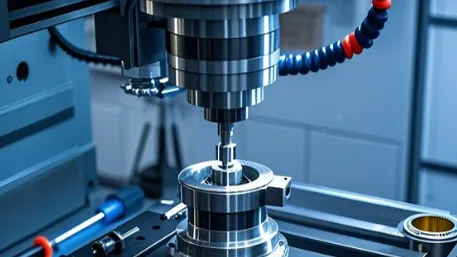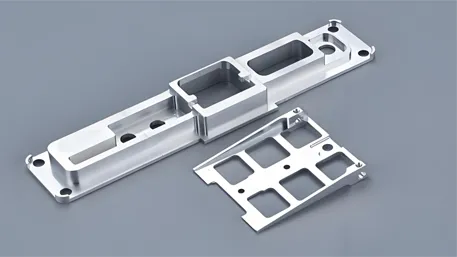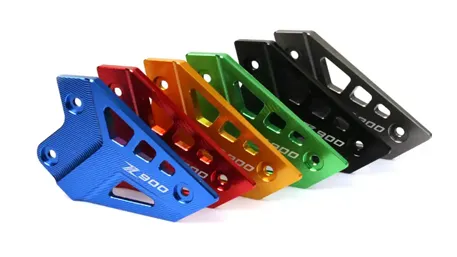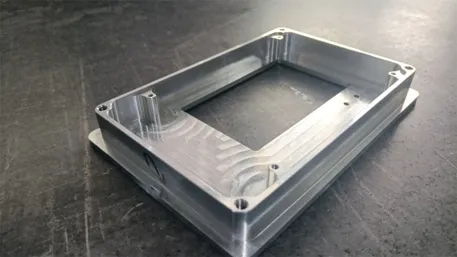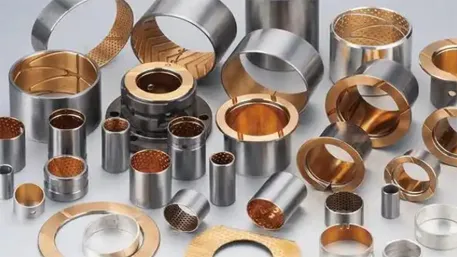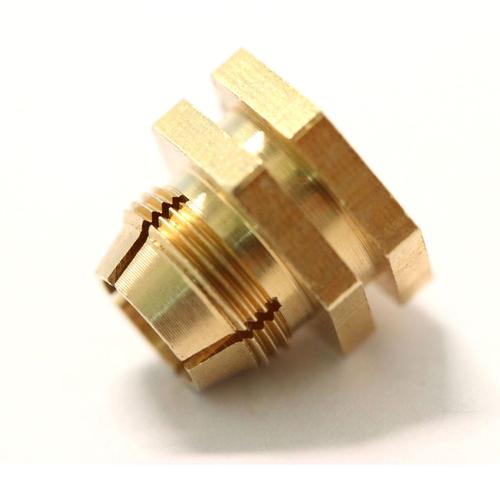In industries such as aerospace, new – energy vehicles, and 3C electronics, which pursue extreme lightweighting, magnesium alloy has become a key material due to its low density (only 1.74g/cm³), high specific strength, and good heat dissipation. However, when dealing with customized magnesium alloy parts, traditional processing often faces challenges such as easy oxidation and combustion, large processing deformation, and poor dimensional accuracy (tolerance exceeding ±0.08mm). The CNC processing service for customized magnesium alloy parts, through special processing techniques, inert gas protection technology, and full – process quality control, can control the dimensional tolerance within ±0.01mm and the surface roughness Ra≤0.8μm, providing a safe, efficient, and precise customized solution for the industry.
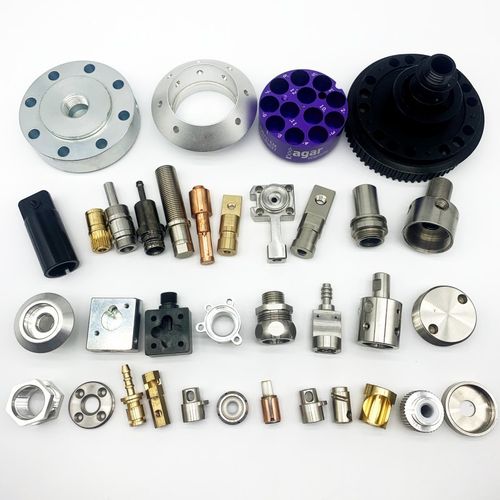
I. Why Can’t Traditional Processing Meet the Requirements of Customized Magnesium Alloy Parts?
Q&A: What are the core advantages of the CNC processing service for customized magnesium alloy parts?
When processing magnesium alloys (such as AZ31, AZ91D, etc.), traditional processing has three core pain points:
Processing safety risks: Magnesium alloy has a low ignition point (about 500°C). The high – temperature chips generated during the cutting process are likely to cause combustion. Traditional processing lacks protective measures, posing significant safety hazards.
Loss of dimensional accuracy control: Magnesium alloy has a low elastic modulus and poor rigidity. The cutting force easily causes part deformation. After ordinary processing, the dimensional error can reach ±0.1mm, which cannot meet the requirements of precision assembly (±0.02mm) in fields such as aerospace.
Surface quality defects: Magnesium alloy is soft and sticky. It is easy to stick to the tool during cutting, resulting in defects such as tearing and scratches on the surface. The Ra value of the surface roughness often reaches 6.3μm, making it difficult to meet the appearance and functional requirements.
The CNC processing service for customized magnesium alloy parts takes “safety, precision, and efficiency” as its core:
Full – process safety protection: Technologies such as nitrogen – protected cutting and water – mist cooling are adopted to eliminate the combustion risk during magnesium alloy processing. A spark detection and automatic fire – extinguishing system is equipped to ensure production safety.
High – precision processing guarantee: High – precision five – axis CNC machine tools (positioning accuracy ±0.003mm) and special tools are used. Combined with optimized cutting parameters and fixture design, the dimensional tolerance is controlled within ±0.01mm, and the surface roughness Ra≤0.8μm.
Data – driven efficient production: Based on the part structure and material characteristics, the processing process is optimized through simulation software. The cycle from order confirmation to the of delivery the first piece is shortened by 60%, the processing efficiency is increased by 50%, and the cost is reduced by 30%.
II. How Does the Core Process of CNC Processing of Customized Magnesium Alloy Parts Achieve Breakthroughs?
Innovation in Safety Protection and Special Equipment
Inert gas protection system: High – purity nitrogen (purity ≥ 99.99%) is introduced into the processing area to control the oxygen concentration below 5%, inhibiting the oxidation and combustion of magnesium alloy. A negative – pressure dust – collecting device is equipped to collect chips in a timely manner and prevent spontaneous combustion due to accumulation.
High – performance processing equipment: A five – axis 联动 high – speed machining center (spindle speed 30,000 – 60,000rpm) is selected, driven by a linear motor (rapid traverse speed 80m/min), with a positioning accuracy of ±0.003mm and a repeat positioning accuracy of ±0.001mm, reducing the impact of cutting force on thin – walled parts.
Special tool materials: PCD (polycrystalline diamond) tools and CVD diamond – coated tools are used. They have high hardness and strong wear resistance, with an edge radius < 0.01mm. The cutting force is reduced by 40%, effectively reducing the tool – sticking phenomenon, and the tool life is extended to more than 12 hours.
Advanced Processing Technologies
High – speed dry cutting: Using a high spindle speed (40,000 – 60,000rpm) and a small cutting depth (0.05 – 0.2mm), dry cutting is achieved under nitrogen protection, avoiding the corrosion problem of magnesium alloy caused by cutting fluid. At the same time, the surface quality is improved, and the processing efficiency is increased by 70%.
Minimum quantity lubrication (MQL): Vegetable – oil – based minimum quantity lubrication (flow rate 0.03 – 0.08ml/min) is adopted to reduce cutting heat, reduce tool wear, reduce surface residual stress by 50%, and the surface roughness Ra can be reduced to 0.4μm.
Fixture optimization: Vacuum – adsorption fixtures (vacuum degree ≥ – 95kPa) and elastic support fixtures are designed. For thin – walled parts (wall thickness ≤ 0.3mm), multi – point flexible clamping is used, and the clamping deformation is controlled within ±0.002mm.
Digital Processing Control System
Processing simulation and optimization: Software such as ANSYS and VERICUT is used to simulate the magnesium alloy cutting process, predict cutting force, thermal deformation, and safety risks, optimize the tool path and cutting parameters, reduce the number of trial cuts by 90%, and avoid material waste and safety accidents.
Intelligent parameter adjustment: More than 50 parameters such as spindle power, cutting force (accuracy ±1N), and tool vibration (resolution 0.1μm) are collected in real – time. An AI algorithm automatically adjusts the feed rate and cutting depth to compensate for tool wear and material deformation. The product qualification rate is increased from 78% to 95%.
Digital twin monitoring: A digital twin model is created for each processing project to track the processing progress, equipment status, and safety data in real – time, predict the trend of processing errors and safety hazards, adjust the process in advance, and issue risk warnings, reducing unplanned downtime by 40%.
III. Quality Control: Stringent Verification from Material to Finished Product
Multi – dimensional Performance Testing System
Material – level screening:
Composition analysis: The chemical composition of magnesium alloy materials is detected by a spectrometer to ensure that the contents of elements such as Al, Zn, and Mn meet the standards of ASTM B90 and GB/T 5153, and the impurity content (such as Fe≤0.05%) is up to standard.
Mechanical properties: A universal material testing machine is used to test the tensile strength (≥240MPa), yield strength (≥140MPa), elongation (≥8%), and a hardness tester is used to measure the Brinell hardness (≥60HB) to ensure that the material properties meet the design requirements.
Metallographic inspection: The microstructure of the material is observed to ensure that the grain size is uniform (grain size ≥ 8 grades) and there are no segregation, inclusions, and other defects, ensuring the internal quality of the material.
Finished – product – level testing:
Dimensional inspection: A coordinate measuring machine (accuracy ±0.003mm) and a laser tracker (accuracy ±0.005mm) are used to detect key dimensions and geometric tolerances (roundness ≤ 0.003mm, flatness ≤ 0.005mm). For small apertures, an image measuring instrument (accuracy ±0.001mm) is used for high – precision detection.
Surface quality: A microscope (magnification 500 times) is used to detect surface scratches and burrs, and a white – light interferometer is used to measure the surface roughness to ensure that there are no defects affecting assembly and use, and the surface roughness Ra≤0.8μm.
Function testing: Fatigue tests (no fracture after 10⁷ cycles) are carried out on aerospace parts, and collision simulation tests are carried out on automotive structural parts to verify the actual use performance.
Intelligent Defect Prevention Technology
The system of thirteen inspections for the first piece: The engineer team strictly inspects 45 indicators of the first – piece parts, such as material batches, tool parameters, and processing dimensions. An electron microscope (magnification 1000 times) is used to detect microscopic defects to ensure zero – error production.
Real – time process monitoring: Through a tool wear monitoring system (resolution 0.001mm), vibration sensors, and spark detectors, warnings are issued in real – time for tool breakage, cutting chatter, and combustion risks. In case of an abnormality, the machine stops automatically and alarms within 0.1 seconds to prevent batch defects and safety accidents.
IV. How Does Customized Magnesium Alloy Processing Balance Efficiency and Cost?
Q&A: Does high – precision customized processing mean high cost and low efficiency?
Through three innovative models, the CNC processing of customized magnesium alloy parts reduces costs by 30% – 40% and increases efficiency by 50%:
Tool life management: An intelligent tool management system is adopted to monitor the tool wear state in real – time, predict the tool life (error < 3%), and replace the tool in advance, reducing downtime by 25% and tool costs by 40%.
Process integration and optimization: Multiple processes such as milling, drilling, boring, and tapping are integrated in a compound machining center, reducing the number of clamping times, increasing the processing efficiency by 40%, and reducing equipment and labor costs.
Digital collaborative production: The MES system integrates data such as orders, processes, equipment, and materials to realize automatic production planning scheduling. The equipment utilization rate is increased from 60% to 85%, further reducing costs.
V. Core Considerations for Choosing CNC Processing Services for Customized Magnesium Alloy Parts
Equipment and technical strength: The supplier should have advanced equipment such as high – speed five – axis machining centers, nitrogen – protection systems, and minimum – quantity – lubrication devices, as well as core technologies such as the application of PCD tools and dry cutting.
Industry certification qualifications: It should have certifications such as AS9100D (aerospace), IATF 16949 (automotive industry), and ISO 9001, as well as third – party test reports to ensure that products meet industry standards.
Safety and digital capabilities: It should have a complete safety protection system, spark detection system, and digital tools such as processing simulation and digital twin to achieve safe, controllable, and efficient production.
Conclusion
The CNC processing service for customized magnesium alloy parts takes safety technology as a prerequisite and precision manufacturing as the core, breaking through the technical and safety bottlenecks of traditional processing, and providing highly reliable customized part solutions for fields such as aerospace, new – energy vehicles, and 3C electronics. In the trend of the continuous growth of the global manufacturing industry’s demand for lightweighting, processing services with “safety protection + precision process + full – chain quality control” are becoming the core competitiveness for enterprises to seize the high – end market. From lightweight components of aero – engines to structural parts of new – energy vehicles, the customized magnesium alloy CNC processing service will continue to contribute to industrial upgrading and innovative development with excellent precision and safety.
(Contact us immediately to obtain a customized CNC processing solution for magnesium alloy parts and a free safety process evaluation service)

